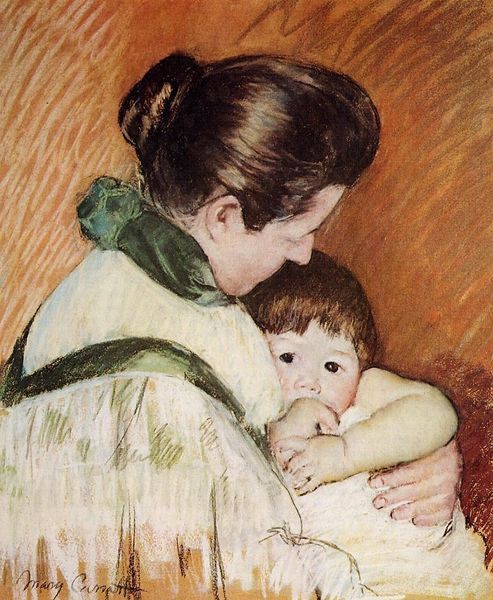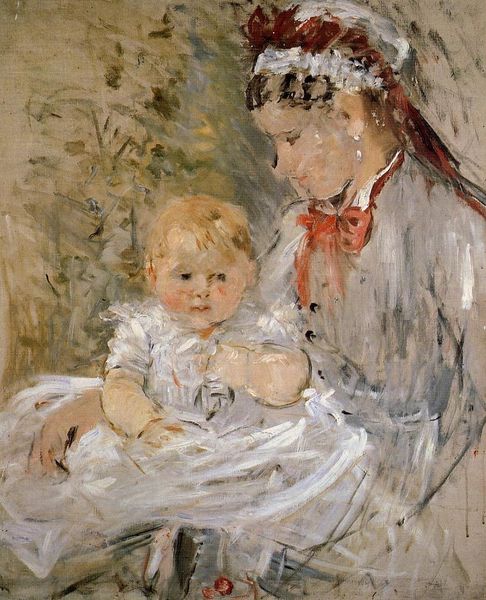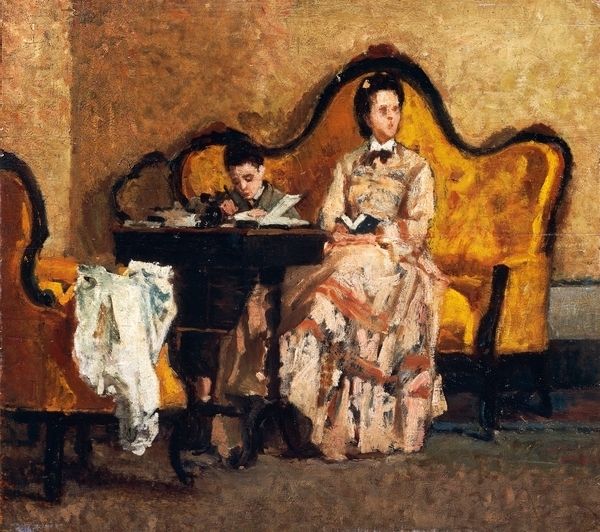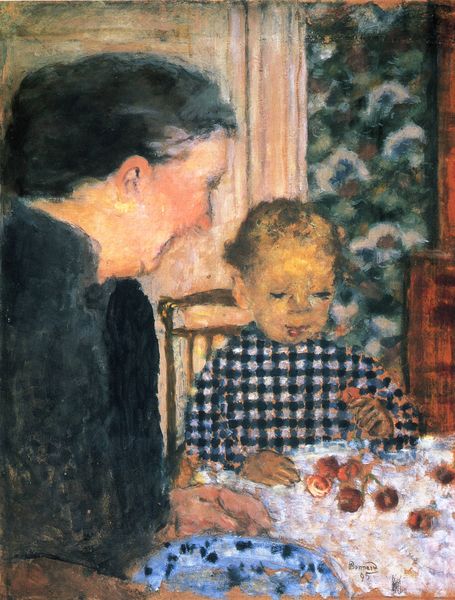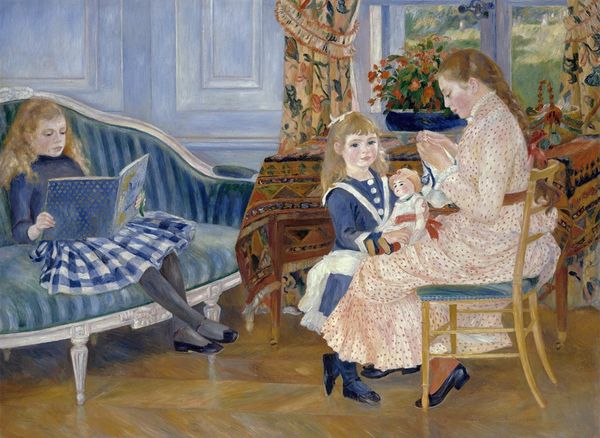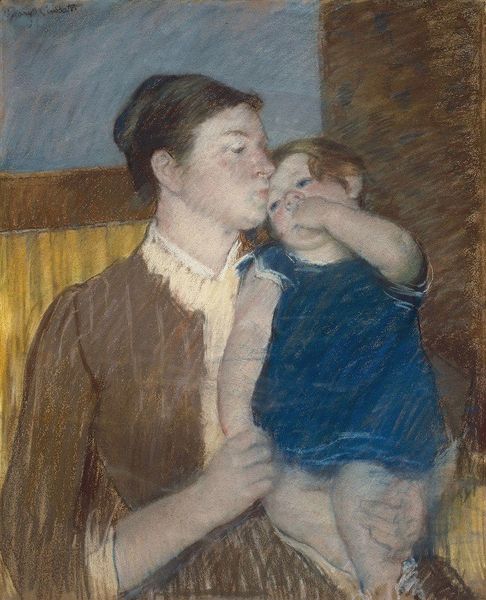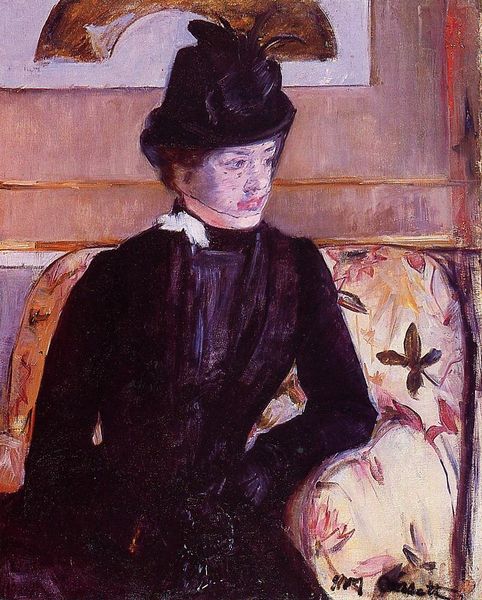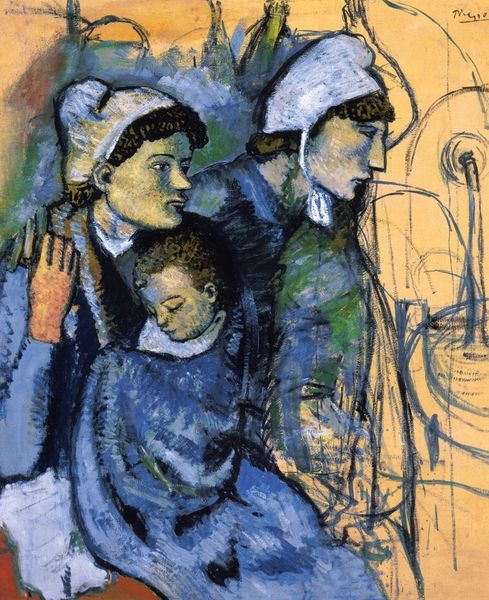
Copyright: Public domain
Editor: We’re looking at Boris Kustodiev's "Family Portrait" from 1904, an oil painting with watercolor elements. It's such a candid portrayal. The composition and the slightly subdued palette give it a very intimate feel. What's your perspective on this piece? Curator: Notice the interplay between the visible brushstrokes and the textures achieved. This approach collapses distinctions between fine art painting and artisanal processes. It urges a look beyond the subjects portrayed. Who supplied the canvas? How were the pigments processed? Editor: That's interesting! I hadn't considered those aspects. The wallpaper seems significant somehow; what do you think about its materiality in this composition? Curator: Exactly. The wallpaper provides both depth and a kind of manufactured beauty. How does that contrast with the hand-made brushwork, and what’s the significance of its placement in the background to this family’s supposed intimacy? Consider the social implications of a rising industrial class being able to afford wallpaper and ready-made clothing. Editor: So you're suggesting the wallpaper isn’t just decoration, it's a symbol of class aspirations, perhaps even anxieties. Curator: Precisely. It highlights the tension between individuality and mass production, particularly evident in the family's attire. This impacts the dynamic of this portrait considerably, it becomes about more than just depicting them, but portraying them through material possessions. Editor: I see it now, it’s much more than meets the eye! Thanks for broadening my understanding of the painting! Curator: Indeed! Reflecting on the materials encourages us to ask further questions regarding the conditions in which the portrait was commissioned and ultimately created.
Comments
No comments
Be the first to comment and join the conversation on the ultimate creative platform.



